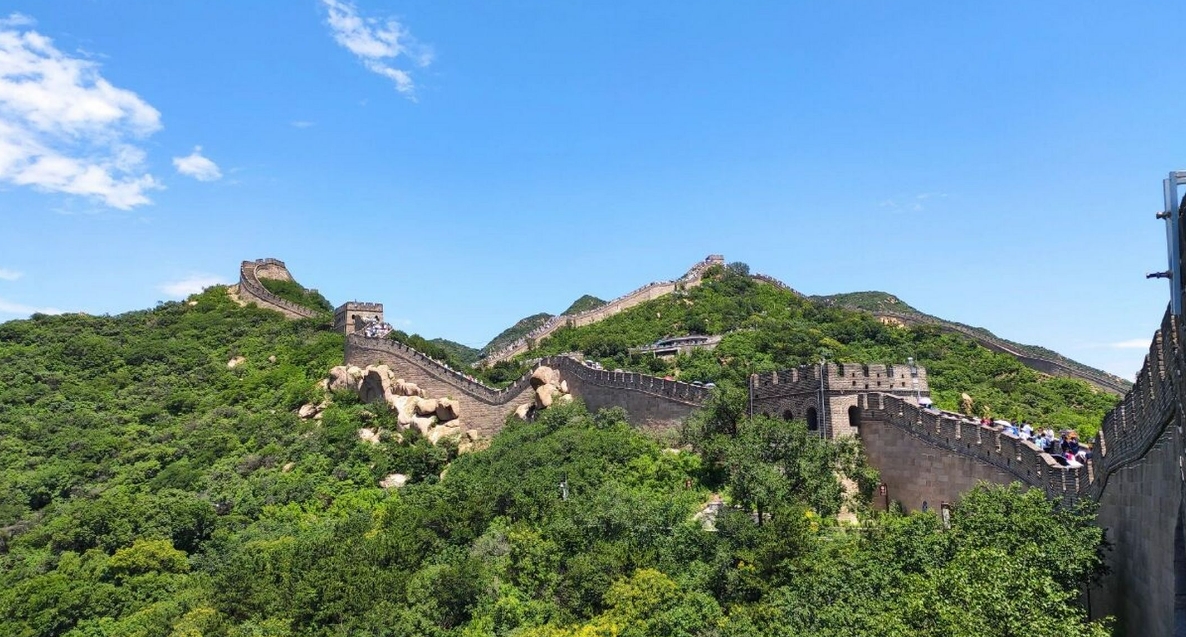
How to Get to Badaling Great Wall?
The magnificent Badaling Great Wall is a must-see attraction for many tourists visiting Beijing. To witness the splendor of the Great Wall, convenient transportation is essential. Currently, there are two main public transportation options to get to the Badaling Great Wall: Bus and High-speed Train (S2 Line). Choosing the most convenient and efficient option depends on your departure point and personal preferences.
High-speed Train (S2 Line): The Fast and Comfortable Choice
If you are staying near a subway station, taking the high-speed train is undoubtedly the most convenient and comfortable way to reach the Badaling Great Wall.
- Route: Take the subway to Qinghe Railway Station, then transfer to the S2 Line Suburban Railway directly to Badaling Great Wall Station.
- Duration: The entire S2 Line journey takes approximately 1 hour and 20 minutes. Trains are frequent, with departures approximately every 10 minutes during peak hours.
- Fare: S2 Line fares vary depending on the travel distance, ranging from 6 yuan to 19 yuan.
- Advantages:
- Fast and Time-efficient: The high-speed train is not affected by road traffic and operates on a fixed schedule.
- Comfortable Environment: The train carriages are spacious and bright, with comfortable seats suitable for the elderly and children.
- Scenic Route: The S2 Line passes by attractions like the Juyongguan Great Wall, offering beautiful views along the way.
- Ticket Purchase: You can use your Beijing Yikatong Card, the Yitongxing App, or the Railway 12306 App to purchase tickets. Tickets can also be purchased at the station ticket office.
Bus: The Economical Choice
If you are staying near Dongzhimen, taking Bus No. 877 is the best option for reaching the Badaling Great Wall.
- Route: Bus No. 877 departs from Dongzhimen Bus Hub and goes directly to the Badaling Great Wall Scenic Area.
- Duration: The journey takes approximately 1.5-2 hours, depending on traffic conditions.
- Fare: Using the Beijing Yikatong Card, the fare is only 4.8 yuan.
- Advantages:
- Affordable: Compared to the high-speed train, the bus fare is more budget-friendly.
- Disadvantages:
- Longer Travel Time: Buses are susceptible to traffic delays, making travel time unpredictable.
- Crowded Carriages: During peak tourist seasons, buses can get crowded.
- Important Notes:
- Check Departure Times in Advance: The first bus on Route 877 departs at 6:00 am, and the last bus departs at 6:00 pm.
- Avoid Peak Hours: Try to avoid traveling during peak hours, such as weekends and holidays, to minimize delays.
Other Options: Direct Tourist Buses from Qianmen
Besides the two options mentioned above, you can also choose to take a direct tourist bus to the Badaling Great Wall from Qianmen.
- Advantages: Direct transportation to the scenic area without transfers, saving time and effort.
- Disadvantages: Relatively more expensive compared to other options, and buses are less frequent.
Tips
- It is recommended to purchase round-trip tickets one day in advance to avoid delays.
- Please check the weather forecast before your trip and pack accordingly for sun protection or cold weather.
- The Badaling Great Wall Scenic Area is vast; it is advisable to wear comfortable shoes.
We hope this information helps you choose the most suitable transportation option for your needs, allowing you to reach the Badaling Great Wall smoothly and embark on an unforgettable journey!
Q&A
Q1: What is the fastest way to get to the Badaling Great Wall? A1: The fastest way to get to the Badaling Great Wall is by taking the S2 Line Suburban Railway from Qinghe Railway Station.
Q2: Is there a bus that goes directly to the Badaling Great Wall? A2: Yes, Bus No. 877 travels directly from Dongzhimen Bus Hub to the Badaling Great Wall Scenic Area.
Q3: Can I buy tickets at the Great Wall entrance? A3: It is highly recommended to buy your entrance tickets online in advance, especially during peak season, to avoid long queues. Tickets can be purchased through official websites or authorized ticketing platforms.
note: This return of all, without the author's permission, may not be reproduced